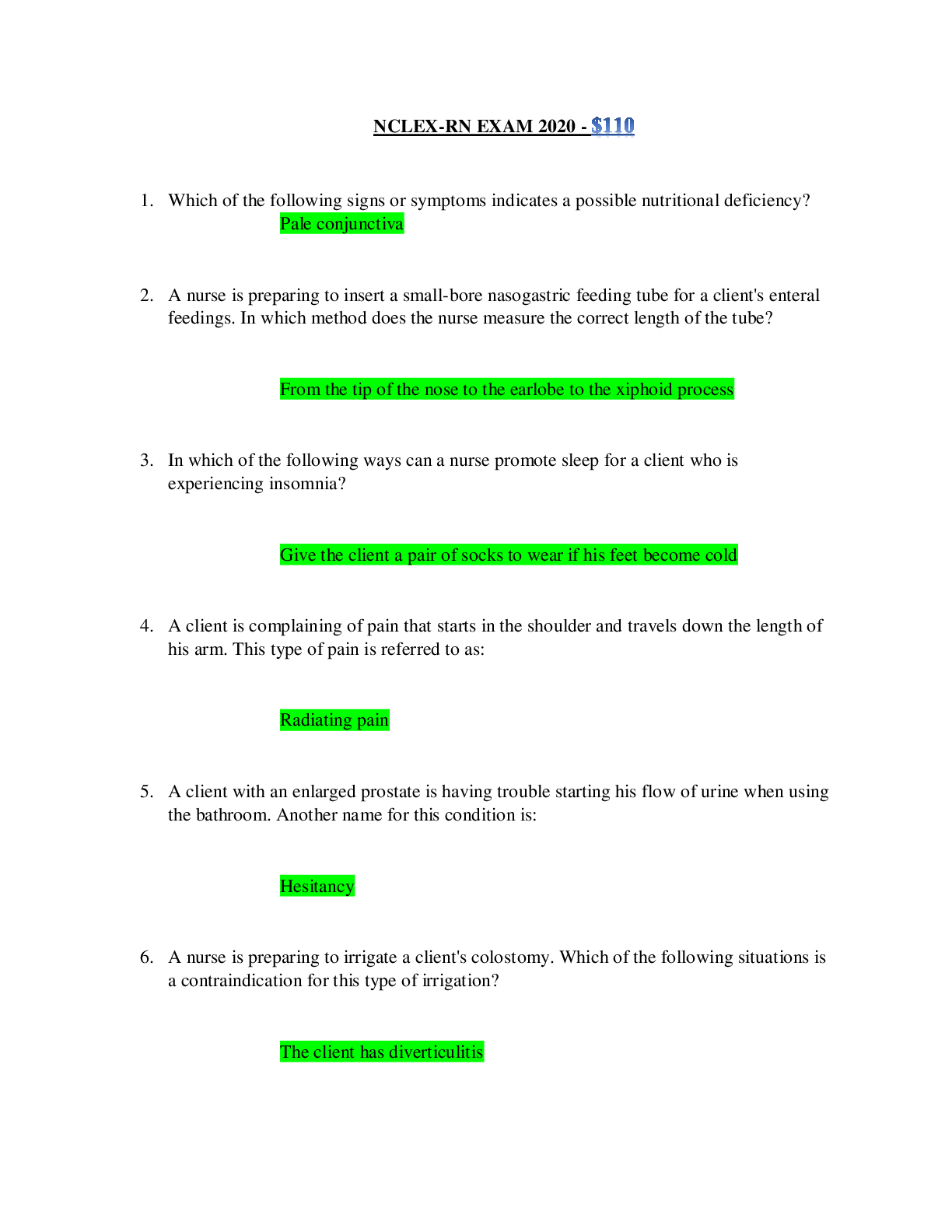*NURSING > NCLEX-RN > C H A P T E R 7_ Prioritizing Client Care: Leadership, Delegation, and Emergency Response Planning: (All)
C H A P T E R 7_ Prioritizing Client Care: Leadership, Delegation, and Emergency Response Planning: From Saunders Comprehensive Review for the NCLEX-RN Examination 8th Edition. (Available: https://bit.ly/2HeJuMt ). Contains Practice questions and Answers with the Rationale, Test-Taking Strategy, Level of Cognitive Ability, Client Needs, Integrated Process, Content Area, Health Problem, Priority Concepts and Reference.
Document Content and Description Below
Priority Concepts Leadership; Health Care Organizations I. Health Care Delivery Systems A. Managed care 1. Managed care is a broad term used to describe strategies used in the health care deliver... y system that reduce the costs of health care. 2. Client care is outcome driven and is managed by a case management process. 3. Managed care emphasizes the promotion of health, client education and responsible self-care, early identification of disease, and the use of health care resources. B. Case management 1. Case management is a health care delivery strategy that supports managed care; it uses an interprofessional health care delivery approach that provides comprehensive client care throughout the client’s illness, using available resources to promote high-quality and cost-effective care. 2. Case management includes assessment and development of a plan of care, coordination of all services, referral, and follow-up. 3. Critical pathways are used, and variation analysis is conducted. 4. The core functions of case management are assessment, treatment planning, linking, advocacy, and monitoring. 188Case management involves consultation and collaboration with an interprofessional health care team. C. Case manager 1. A case manager is a professional nurse who assumes responsibility for coordinating the client’s care at admission and after discharge. 2. The case manager establishes a plan of care with the client, coordinates any interprofessional consultations and referrals, and facilitates discharge. 3. A case manager is knowledgeable in various types of health insurance, which allows them to assist clients in navigating health care options covered by insurance. D. Health Insurance 1. There are state and federal insurance plans. 2. An aim of the Affordable Care Act is to reduce the amount of uncompensated care the average U.S. family pays for by requiring everyone to have health insurance or pay a tax penalty. Its goals are to expand access to health insurance, reduce costs, and protect clients against arbitrary actions by insurance companies. 3. There are many insurance companies that provide state marketplace insurance; some include Aetna, Blue Cross Blue Shield, Cigna, Humana, Kaiser, United, and TriCare/Humana. 4. Types of insurance plans include health maintenance organizations (HMOs), preferred provider organizations (PPOs), exclusive provider organizations (EPOs), point-of-service (POS) plans, high-deductible health plans (HDHPs), and health savings accounts (HSAs); these offer varying options in terms of insurance coverage and out-of-pocket costs and premiums. 5. Medicare is a federal health insurance program for persons aged 65 or older, certain younger people with disabilities, and people with end-stage renal disease (ESRD) requiring dialysis or renal transplant. Certain premiums are attached to each part. a. Part A: covers hospital stays, skilled nursing facility stays, hospice care, and some home health care b. Part B: helps pay for some services not covered by Part A. Medicare usually covers 80% for approved services; 189remaining 20% is the client's responsibility and a supplemental insurance needs to be obtained c. Part C: a health plan offered by a private insurance agency that contracts with Medicare to supplement coverage d. Part D: covers prescription medication needs 6. Medicaid is a joint federal and state program that provides health benefits to eligible low-income adults, children, pregnant women, elderly individuals, and people with disabilities. A concern associated with these programs is fraud and abuse; a case manager needs to know how to complete insurance, state, and federal applications and be astute enough to know if an individual is reporting incorrect information. E. Critical pathway 1. A critical pathway is a clinical management care plan for providing client-centered care and for planning and monitoring the client’s progress within an established time frame; interprofessional collaboration and teamwork ensure shared decision making and quality client care. 2. Critical pathways are based on evidence-based practice and include evidence-based medical practice, budgetary, organizational, and systems-wide information. 3. Variation analysis is a continuous process that the case manager and other caregivers conduct by comparing the specific client outcomes with the expected outcomes described on the critical pathway. 4. The goal of a critical pathway is to anticipate and recognize negative variance (i.e., client problems) early so that appropriate action can be taken and positive client outcomes can result. 5. Critical pathways are used to ensure medical care is consistent within budget constraints and to allow providers to care for more complex clients. For example, some ambulatory practices have critical pathways for certain conditions such as blood pressure monitoring or urinary tract infections. F. Nursing Care Plan 1. A nursing care plan is a written guideline and communication tool that identifies the client’s pertinent assessment data, problems and nursing diagnoses, goals, interventions, and expected outcomes. 1902. The plan enhances interprofessional continuity of care by identifying specific nursing actions necessary to achieve the goals of care. 3. The client and family are involved in developing the plan of care, and the plan identifies short-term and long-term goals. 4. Client problems, goals, interventions, and expected outcomes are documented in the care plan, which provides a framework for evaluation of the client’s response to nursing actions. The care plan is modified as the client condition changes. II. Nursing Delivery Systems A. Functional nursing 1. Functional nursing involves a task approach to client care, with tasks being delegated by the charge nurse to individual members of the team. 2. This type of system is task-oriented, and the team member focuses on the delegated task rather than the total client; this results in fragmentation of care and lack of accountability by the team member. B. Team nursing 1. The team generally is led by a registered nurse (team leader) who is responsible for assessing clients, analyzing client data, planning, and evaluating each client’s plan of care. 2. The team leader determines the work assignment; each staff member works fully within the realm of his or her educational and clinical expertise and job description. 3. Each staff member is accountable for client care and outcomes of care delivered in accordance with the licensing and practice scope as determined by health care agency policy and state law. 4. Modular nursing is similar to team nursing but takes into account the structure of the unit; the unit is divided into modules, allowing nurses to care for a group of clients who are geographically close by. C. Relationship-based practice (primary nursing) 1. Relationship-based practice (primary nursing) is concerned with keeping the nurse at the bedside, actively involved in client care, while planning goaldirected, individualized care. 2. One (primary) nurse is responsible for managing and coordinating the client’s care while in the hospital and for discharge, and an associate nurse cares for the client when the primary nurse is off-duty. D. Client-focused care 1. This is also known as the total care or case method; the 191registered nurse assumes total responsibility for planning and delivering care to a client. 2. The client may have different nurses assigned during a 24-hour period; the nurse provides all necessary care needed for the assigned time period. III. Professional Responsibilities A. Accountability 1. The process in which individuals have an obligation (or duty) to act and are answerable for their choices, decisions, and actions. 2. Involves assuming only the responsibilities that are within one’s scope of practice and not assuming responsibility for activities in which competence has not been achieved. 3. Involves admitting mistakes rather than blaming others and evaluating the outcomes of one’s own actions. 4. Includes a responsibility to the client to be competent and provide nursing care in accordance with standards of nursing practice while adhering to the professional ethics codes. Accountability is the acceptance of responsibility for one’s choices, decisions, and actions. The nurse is always responsible for their actions when providing care to a client. B. Leadership and management 1. Leadership is the interpersonal process that involves influencing others (followers) to achieve goals. 2. Management is the accomplishment of tasks or goals by oneself or by directing others. C. Theories of leadership and management (Box 7-1) D. Leader and manager approaches 1. Authoritarian leadership a. The leader or manager is focused and maintains strong control, makes decisions, and addresses all problems. b. The leader or manager dominates the group and commands rather than seeks suggestions or input. 2. Democratic leadership a. This is also called participative management. b. It is based on the belief that every group member should have input int Practice Questions 29. The nurse is assigned to care for four clients. In planning client rounds, which client should the nurse assess first? 1. A postoperative client preparing for discharge with a new medication 2. A client requiring daily dressing changes of a recent surgical incision 3. A client scheduled for a chest x-ray after insertion of a nasogastric tube 4. A client with asthma who requested a breathing treatment during the previous shift 22030. The nurse employed in an emergency department is assigned to triage clients coming to the emergency department for treatment on the evening shift. The nurse should assign priority to which client? 1. A client complaining of muscle aches, a headache, and history of seizures 2. A client who twisted her ankle when rollerblading and is requesting medication for pain 3. A client with a minor laceration on the index finger sustained while cutting an eggplant 4. A client with chest pain who states that he just ate pizza that was made with a very spicy sauce 31. A nursing graduate is attending an agency orientation regarding the nursing model of practice implemented in the health care facility. The nurse is told that the nursing model is a team nursing approach. The nurse determines that which scenario is characteristic of the team-based model of nursing practice? 1. Each staff member is assigned a specific task for a group of clients. 2. A staff member is assigned to determine the client’s needs at home and begin discharge planning. 3. A single registered nurse (RN) is responsible for providing care to a group of 6 clients with the aid of an assistive personnel (AP). 4. An RN leads 2 licensed practical nurses (LPNs) and 3 APs in providing care to a group of 12 clients. 32. The nurse has received the assignment for the day shift. After making initial rounds and checking all of the assigned clients, which client should the nurse plan to care for first? 1. A client who is ambulatory demonstrating steady gait 2. A postoperative client who has just received an opioid pain medication 3. A client scheduled for physical therapy for the first crutchwalking session 4. A client with a white blood cell count of 14,000 mm3 (14 × 109/L) and a temperature of 38.4° C 33. The nurse is giving a bed bath to an assigned client when an assistive personnel (AP) enters the client’s room and tells the nurse that another assigned client is in pain and needs pain medication. Which is the most appropriate nursing action? 1. Finish the bed bath and then administer the pain medication to the other client. 2. Ask the AP to find out when the last pain medication was given to the client. 3. Ask the AP to tell the client in pain that medication will be administered as soon as the bed bath is complete. 4. Cover the client, raise the side rails, tell the client that you will return shortly, and administer the pain medication to the other client. 34. The nurse manager has implemented a change in the method of the nursing delivery system from functional to team nursing. An assistive personnel (AP) 221is resistant to the change and is not taking an active part in facilitating the process of change. Which is the best approach in dealing with the AP? 1. Ignore the resistance. 2. Exert coercion on the AP. 3. Provide a positive reward system for the AP. 4. Confront the AP to encourage verbalization of feelings regarding the change. 35. The registered nurse is planning the client assignments for the day. Which is the most appropriate assignment for an assistive personnel (AP)? 1. A client requiring a colostomy irrigation 2. A client receiving continuous tube feedings 3. A client who requires urine specimen collections 4. A client with difficulty swallowing food and fluids 36. The nurse manager is discussing the facility protocol in the event of a tornado with the staff. Which instructions should the nurse manager include in the discussion? Select all that apply. 1. Open doors to client rooms. 2. Move beds away from windows. 3. Close window shades and curtains. 4. Place blankets over clients who are confined to bed. 5. Relocate ambulatory clients from the hallways back into their rooms. 37. The nurse employed in a long-term care facility is planning assignments for the clients on a nursing unit. The nurse needs to assign four clients and has a licensed practical nurse and 3 assistive personnel (APs) on a nursing team. Which client would the nurse most appropriately assign to the licensed practical nurse? 1. A client who requires a bed bath 2. An older client requiring frequent ambulation 3. A client who requires hourly vital sign measurements 4. A client requiring abdominal wound irrigations and dressing changes every 3 hours 38. The charge nurse is planning the assignment for the day. Which factors should the nurse remain mindful of when planning the assignment? Select all that apply. 1. The acuity level of the clients 2. Specific requests from the staff 3. The clustering of the rooms on the unit 4. The number of anticipated client discharg [Show More]
Last updated: 1 year ago
Preview 1 out of 45 pages
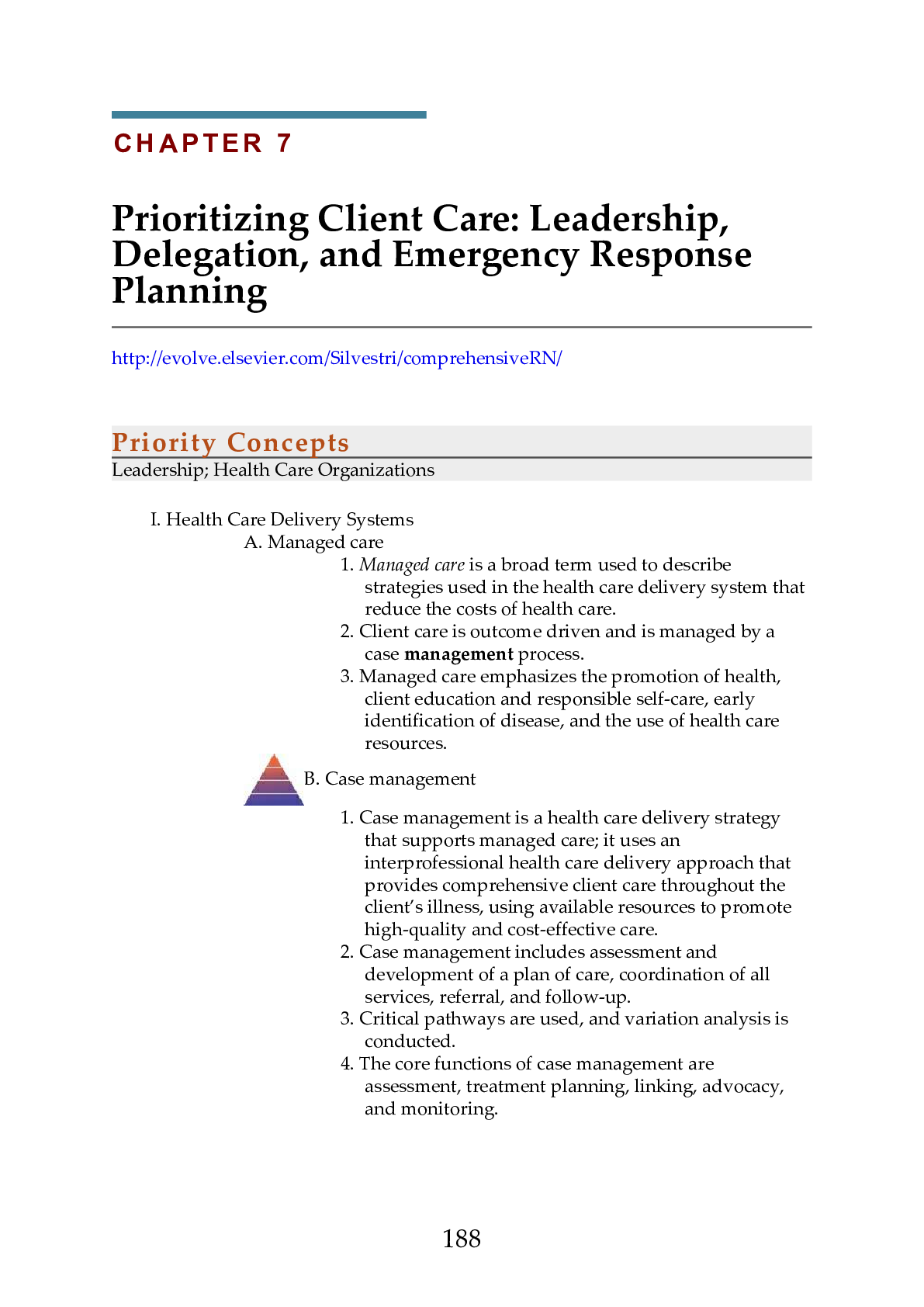
Reviews( 0 )
Document information
Connected school, study & course
About the document
Uploaded On
Oct 22, 2020
Number of pages
45
Written in
Additional information
This document has been written for:
Uploaded
Oct 22, 2020
Downloads
0
Views
103


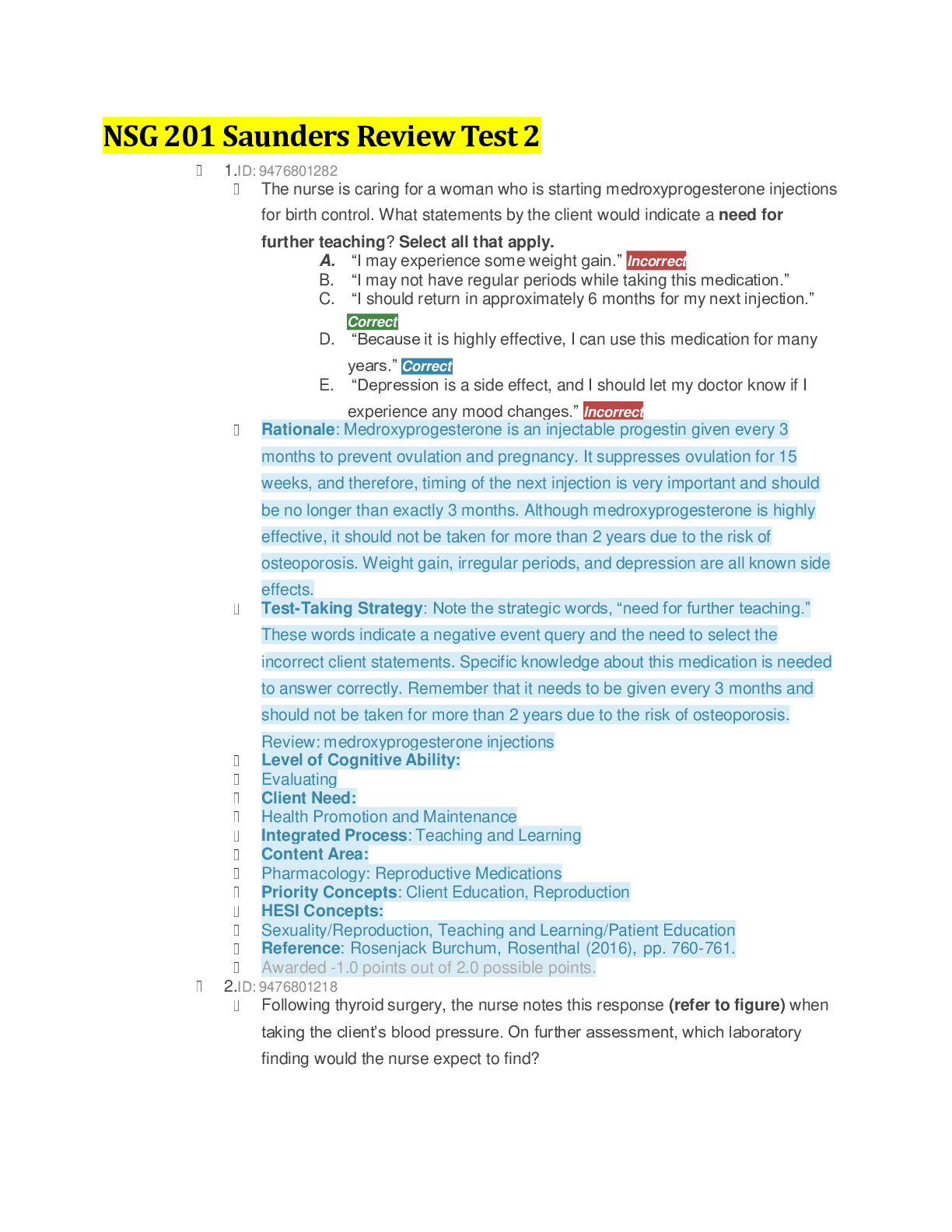

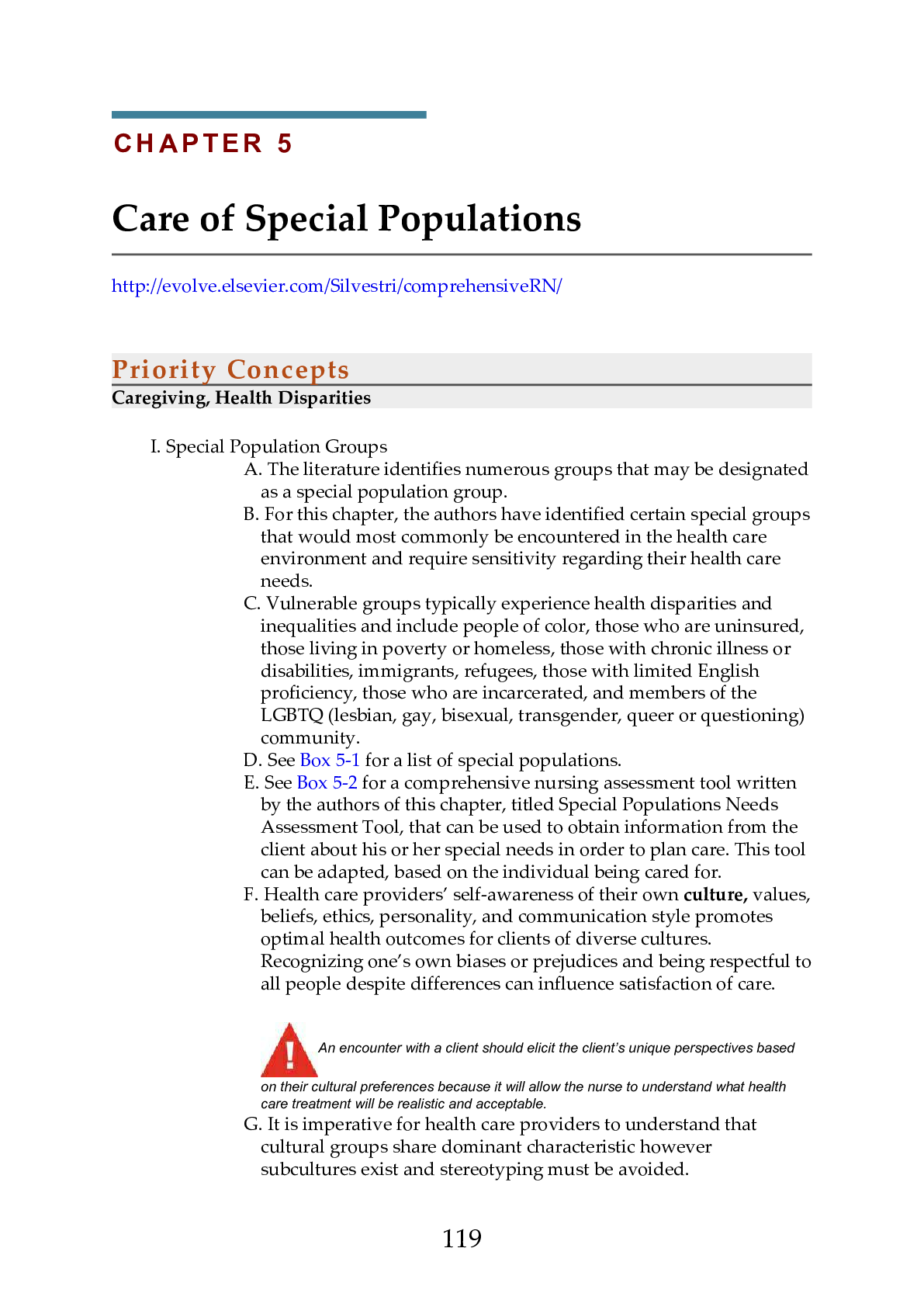


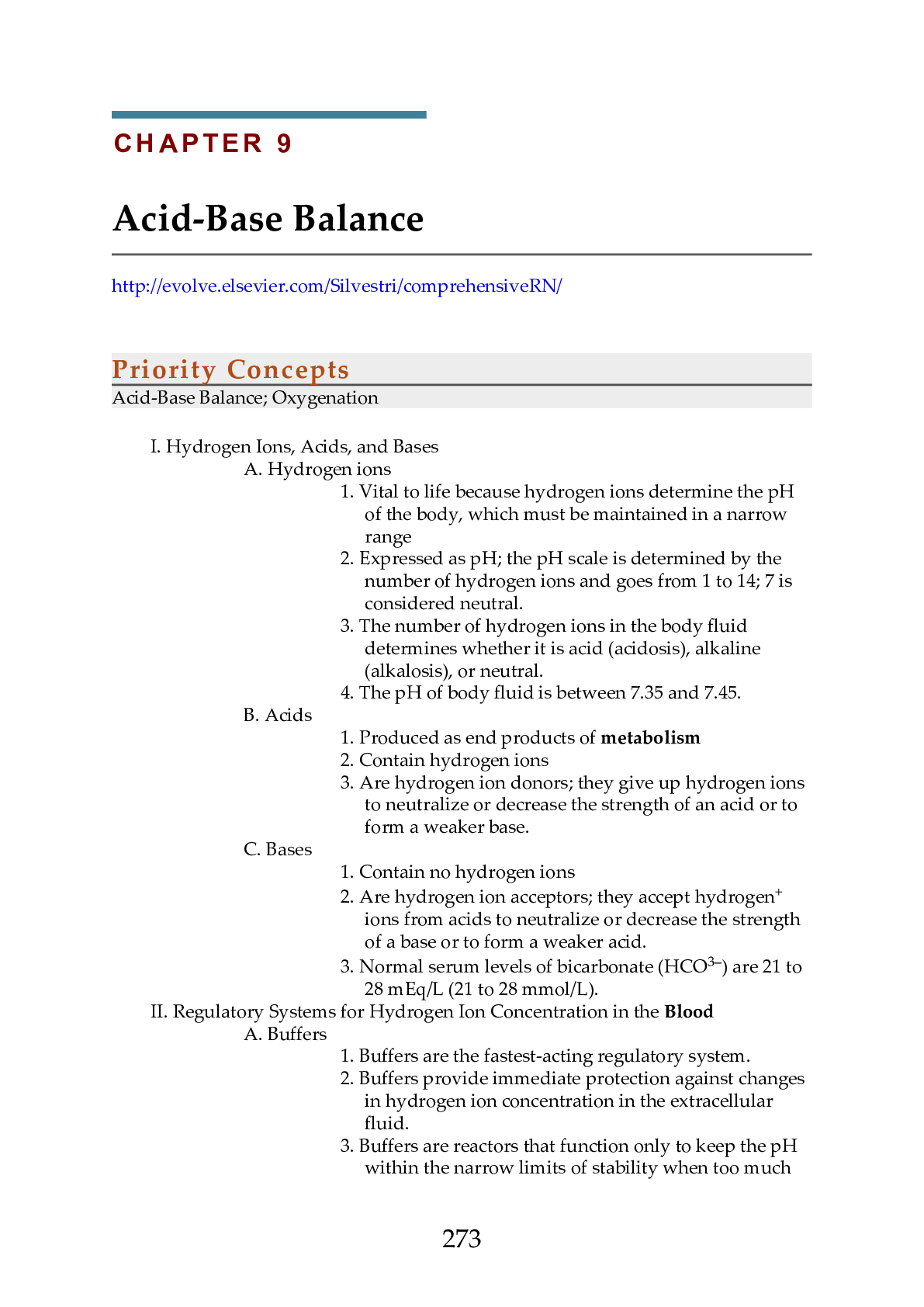



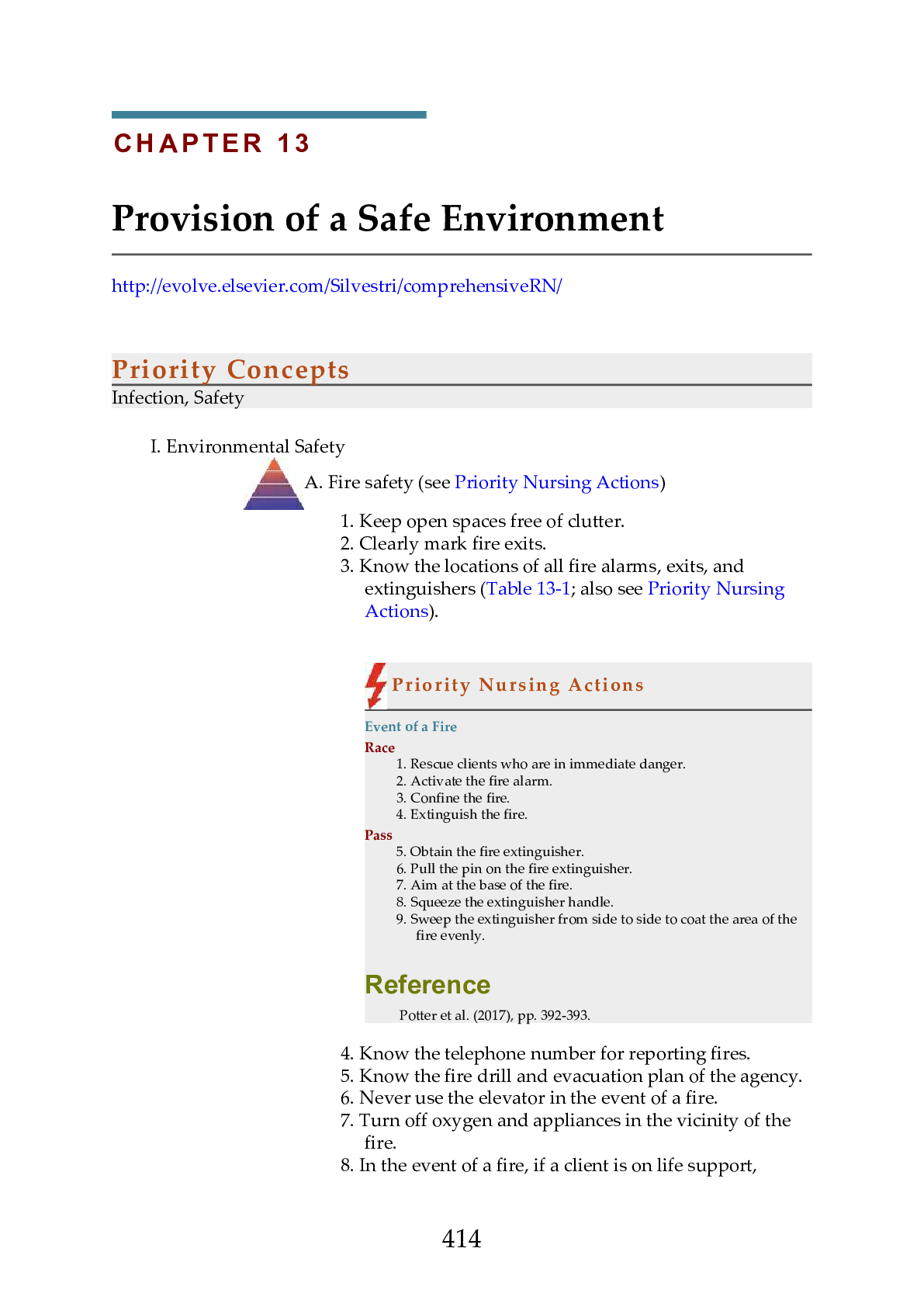


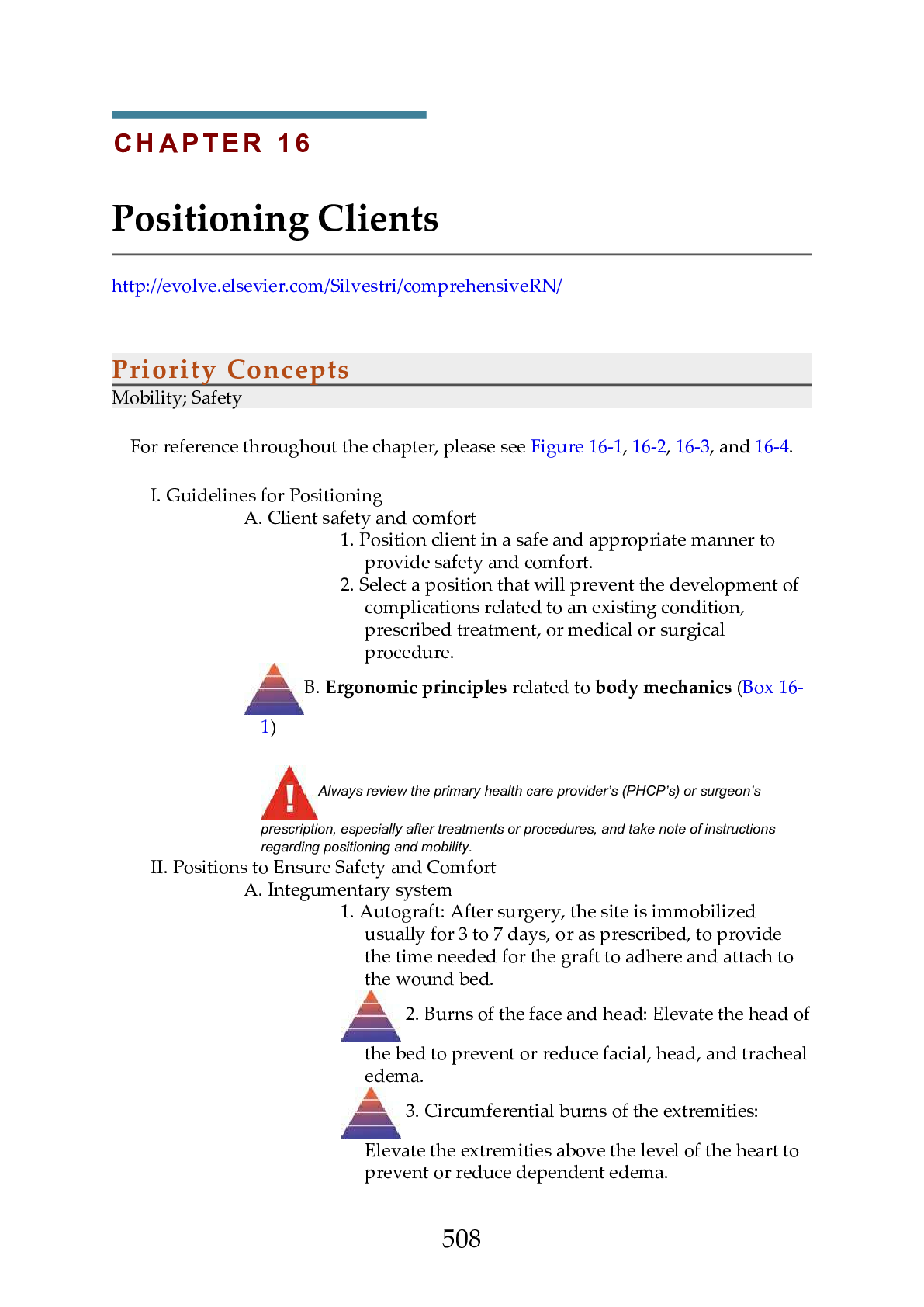


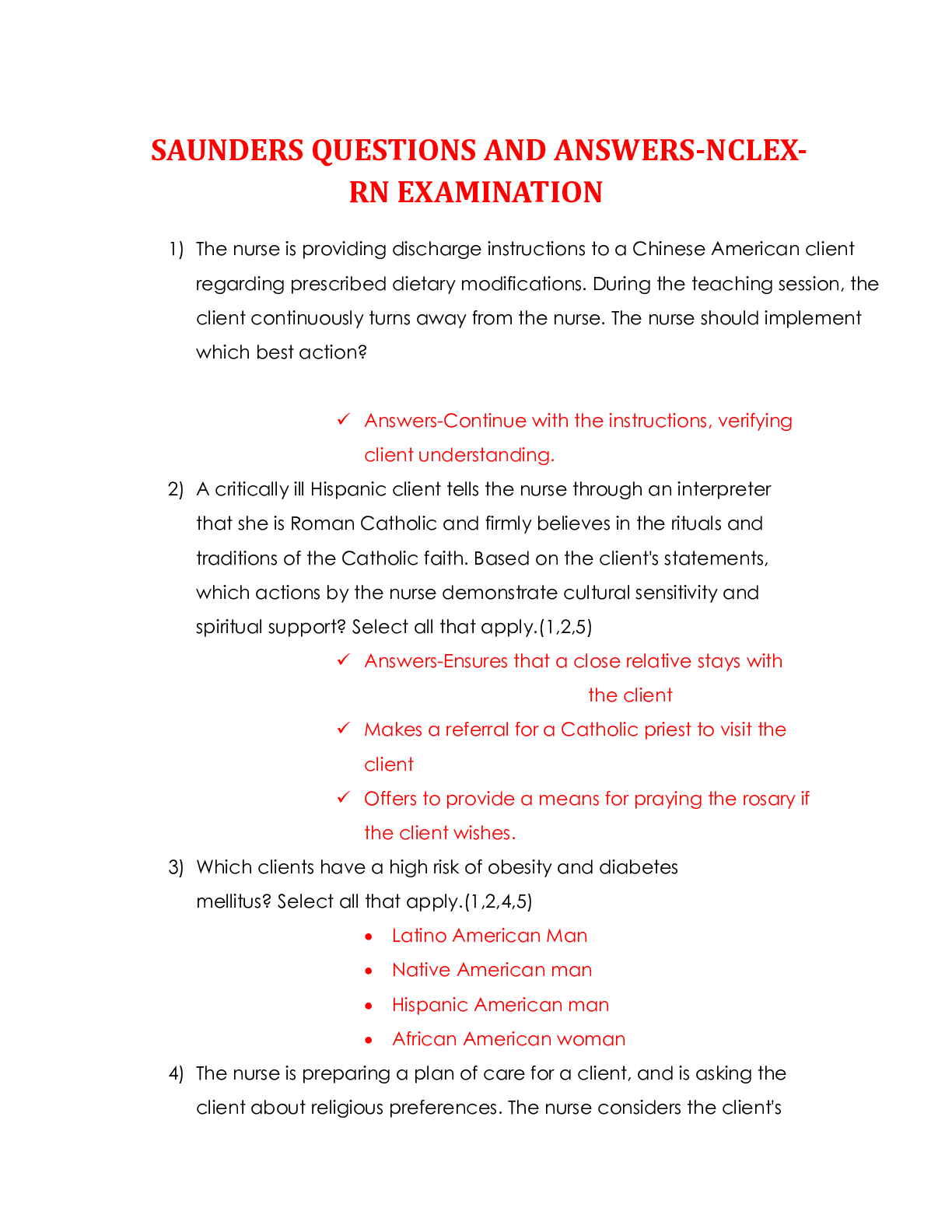

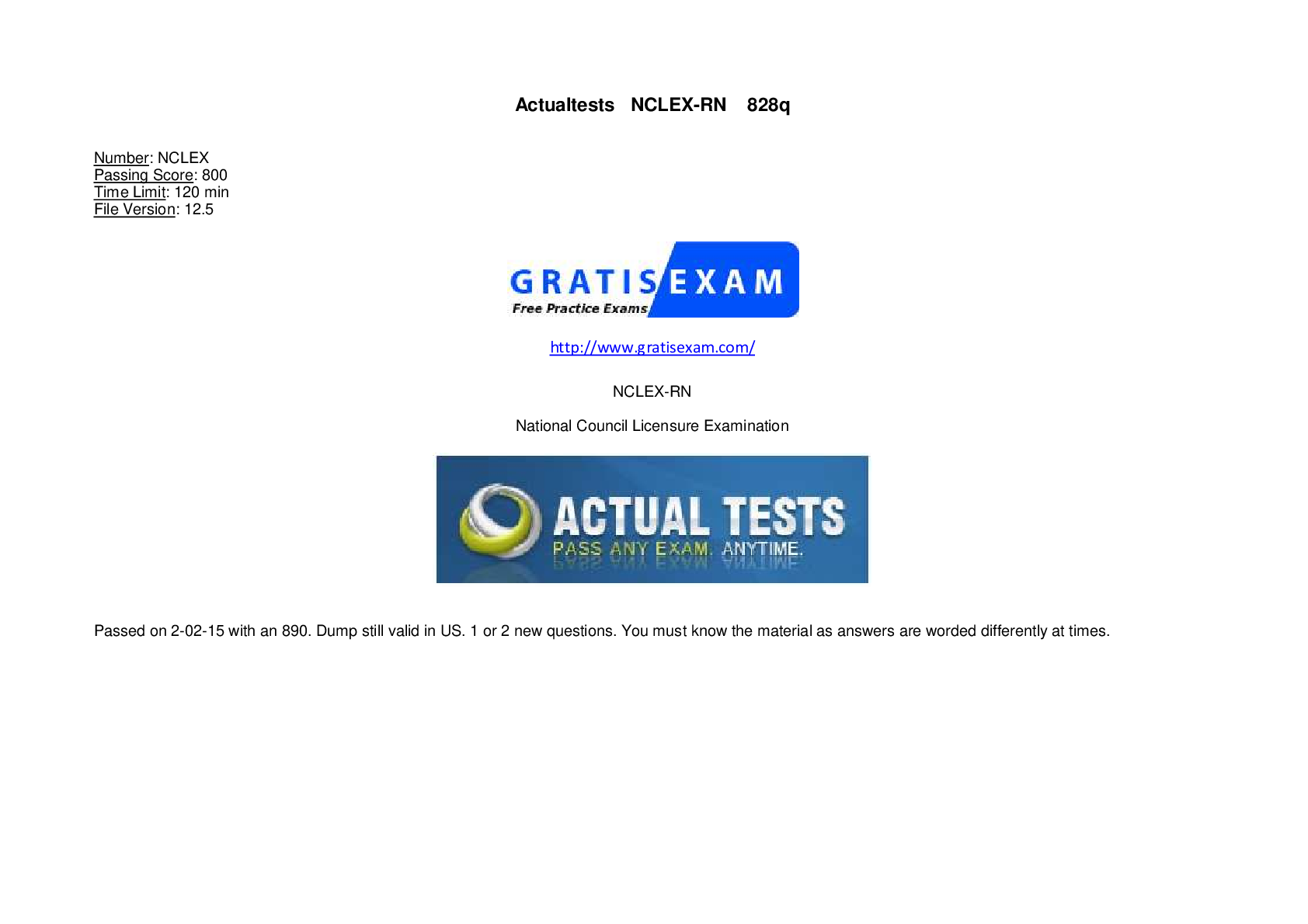
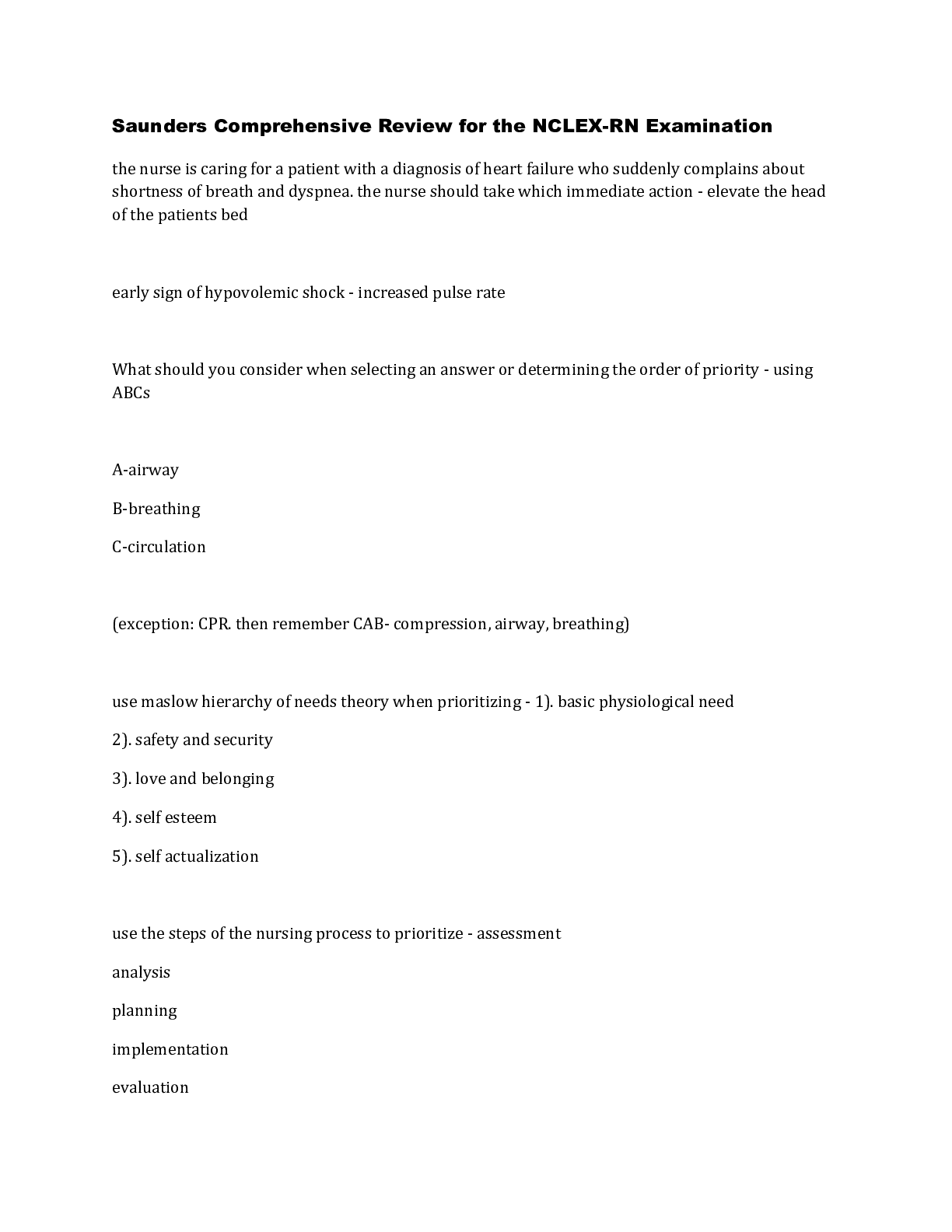





 With 850 Questions And Answers Guaranteed 100% Grade A.png)
